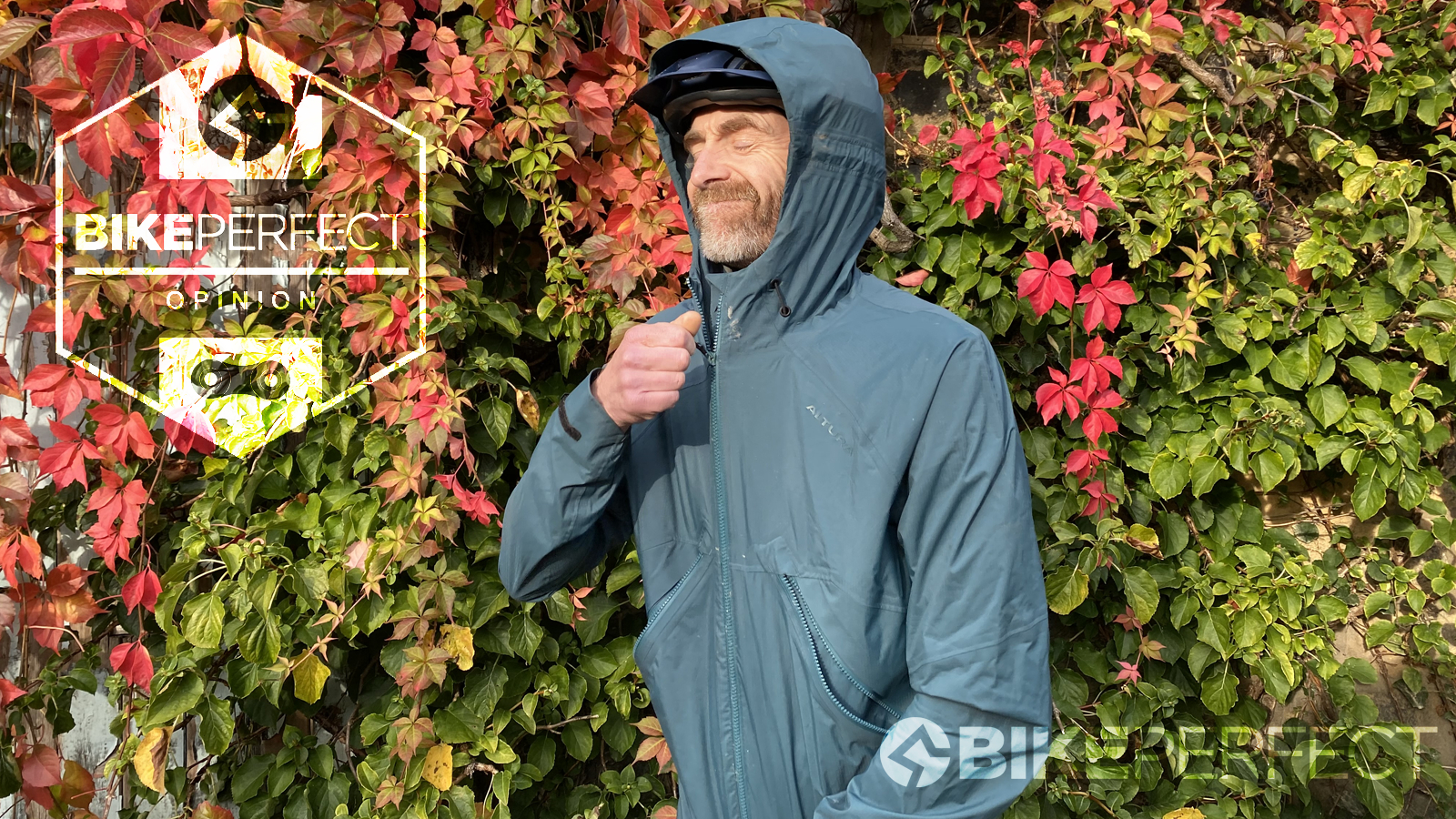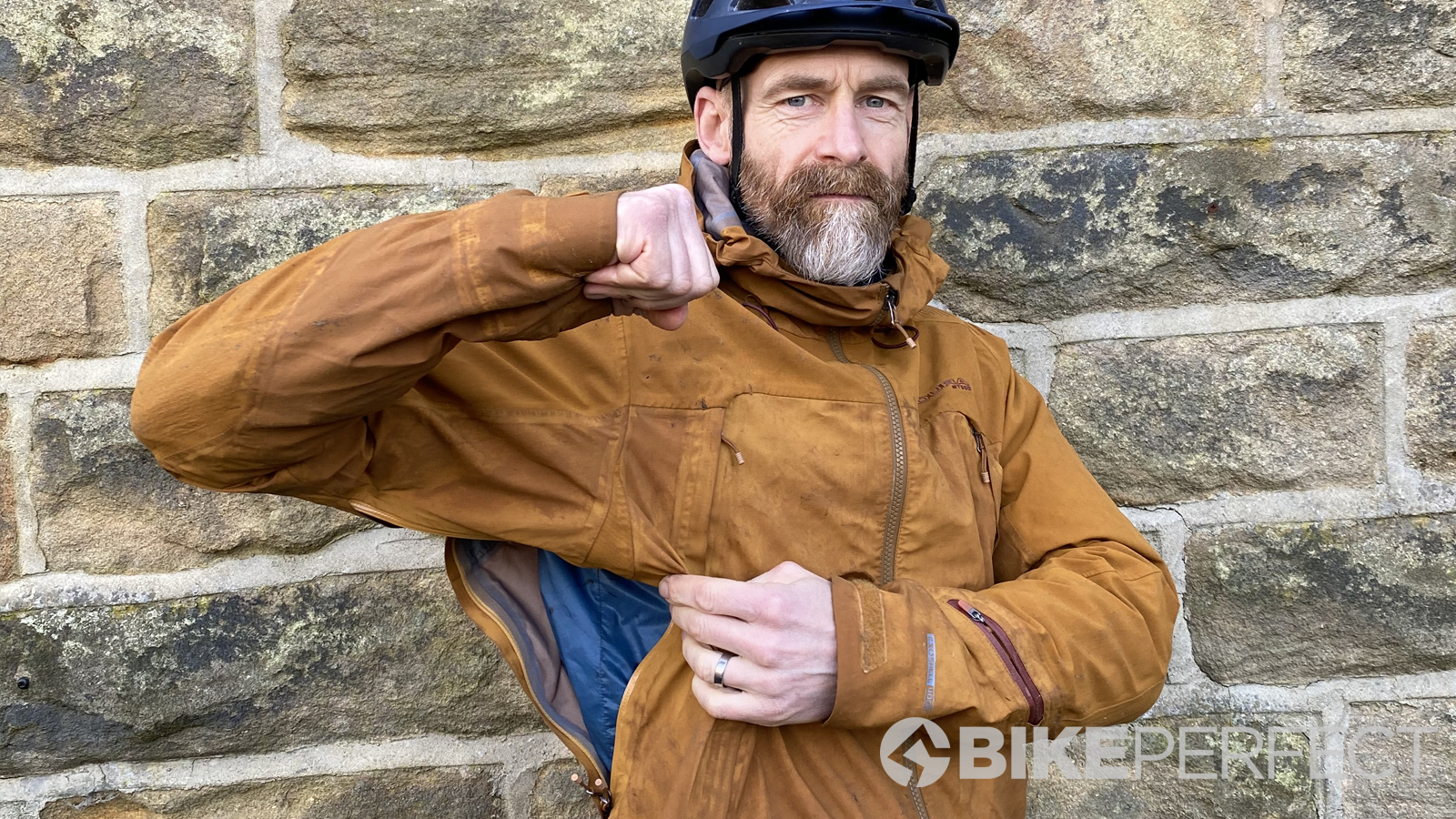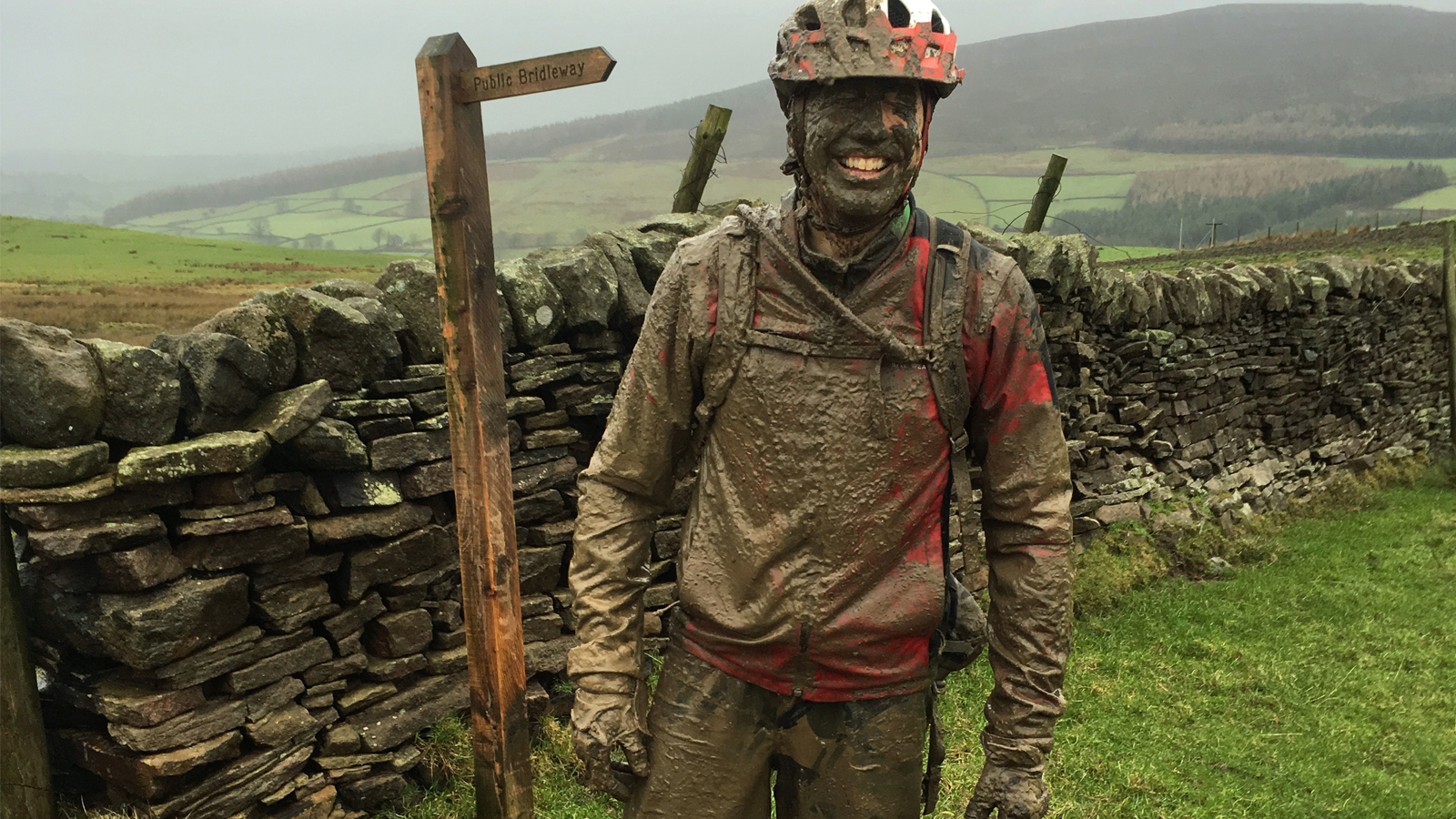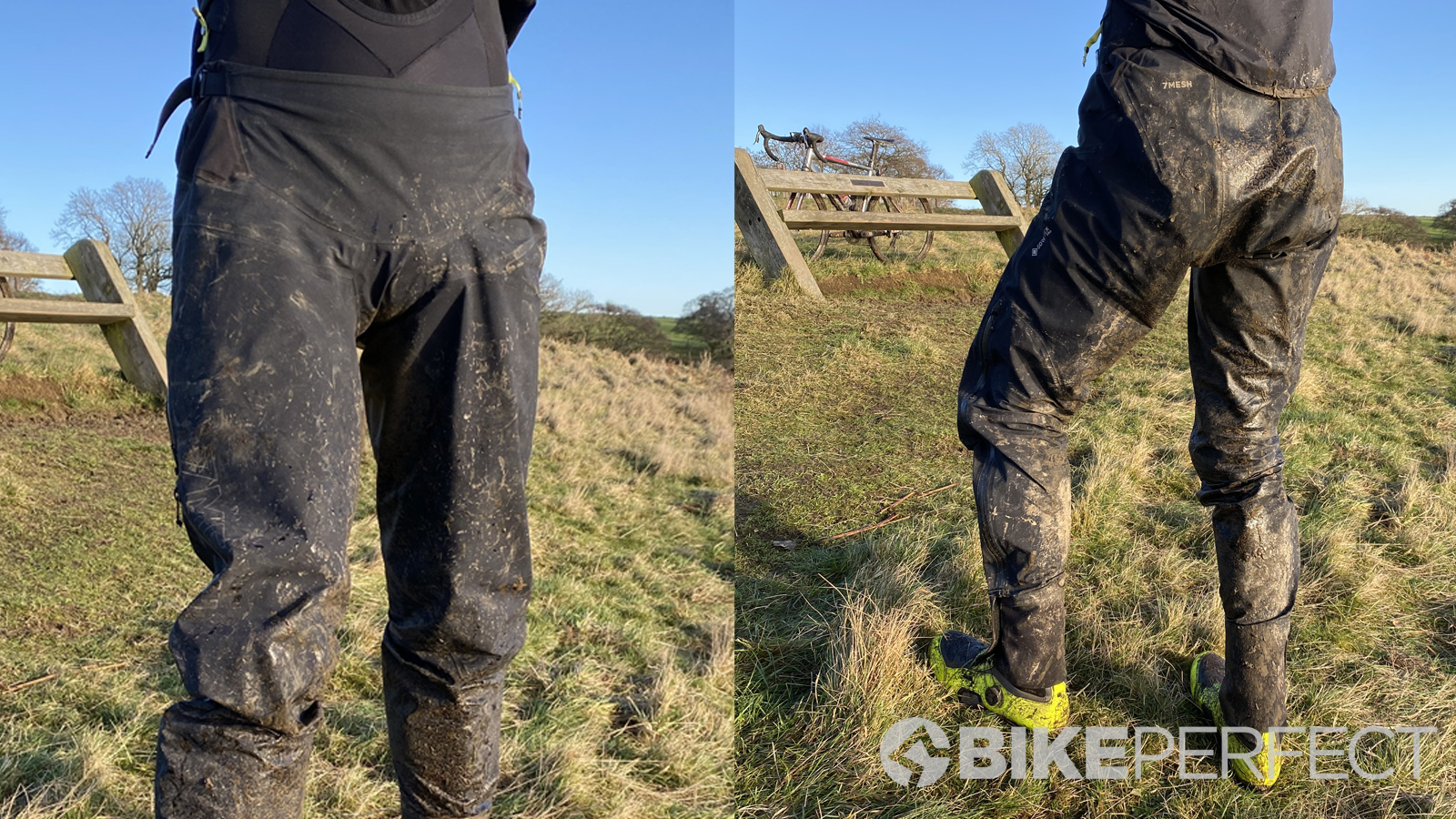Bespoken Word: Nothing is waterproof
Is ‘waterproofing' just a big lie? Guy Kesteven has been working and riding in the wet for decades and tested all the high-tech fabrics available in search of that very answer...

Firstly, I suppose I should apologize to all the fabric and clothing makers who are probably preparing to type an outraged reply. I’m not saying there isn’t a standard by which cloth and clothes are judged waterproof. There are all sorts of different tests to ascertain how much water pressure a fabric can handle before the water starts to seep through. When transferred to a jacket you then have to add seam sealing and ‘waterproof’ zips into the deal. There are labs that’ll test all these features for manufacturers, too, so they can confirm they meet the minimum ‘hydrostatic head’ test number and proudly stick a ‘waterproof’ tag on their clothes so we can skip out into the storms under a cloak of guaranteed dryness.
Except we know that’s not what’s going to happen. We’re almost certainly going to get at least partially wet and, if we don’t get our layering right for the conditions, length and intensity of our ride, we might end up uncomfortably cold, too. But our ‘waterproof’ gear tests are always super popular and “what is the best MTB jacket to buy” will be the question I’m asked most by mates and randoms for the next six months. So what’s my answer and why?
First off, you need to realize that the rain is only a small part of the problem and that the biggest issue is you - or, more exactly, your sweat. While most animals regulate heat by panting our naked bodies are designed to regulate temperature by secreting moisture that speeds up the thermal transfer into the air and cools us down. This mechanism that makes us super efficient at maintaining prolonged exertion without overheating is a nightmare to manage while simultaneously providing weather protection. Robert Gore created the first permeable synthetic membrane by accident when he yanked a superheated PTFE (polytetrafluoroethylene) stretch fabric super-hard in frustration. He realized that the microscopic pores in the almost torn fabric could work the same way as the pores in your skin, letting sweat vapor seep out while stopping larger rain droplets from coming in.

To be honest, I don’t exactly understand why they behave differently once they’ve cooled and are passing through the fabric but scientific people say it’s a thing so I’m going with it. Depending on the design, different fabrics ‘breathe’ at very different rates which is normally expressed as their Water Vapour Transmission (WVT) rate. While GoreTex themselves are very cagey about putting the exact breathability into numbers and don’t even publicly rank its top-performing fabrics - Paclite, Active etc. - in order and Polartec are vague, too, you’ll often see numbers anywhere from 5,000 up to 60,000 quoted for breathability. My heart sinks at the inevitably clammy, cold sogginess ahead if I’ve got to test a garment south of 10,000, pray for big vents below 25,000 and only actually have a glimmer of hope I won’t feel like I’m boiling in the bag on an extended climb at double that rating.
As soon as you start adding rain/spray plus other elements inside and out though you’re jumping onto a thermo and moisture regulation roller coaster. For a start, any water that sits on the outside face or soaks into the protective outer layers will create a block for the sweat vapor coming out. That’s why most waterproof or weather-resistant jackets use a ‘DWR’ Durable Water Repellency’ layer to try and ‘bead’ the water droplets on the surface of the fabric so they roll off without penetrating. GoreTex goes a stage further with its ShakeDry fabric with a naked protective membrane that you can literally shake the water off at first. And that’s the crucial statement here - "at first”. That’s because whether it’s dirt, body grease, incorrect fabric conditioner washing DWR off (increasingly quickly as companies rightly switch to lower carbon ‘eco’ treatments) or just brushing against undergrowth or bits of your bike, those surface droplets will start spreading out and soaking into the material. Again different materials, coatings etc. will hold out longer but whether it’s minutes in a shower or hours in a monsoon at some point you’ll ‘wet out’. This is significant because it makes it much harder for the material to shift sweat outwards so while the inner membrane - most fabrics put the true waterproof layer in a sandwich between the outer protective layer and inner fabric (three-layer) or sweat-spreading print dots (2.5-layer) - might keep rain on the outside you’ll actually be wet inside from your sweat. Plus because the outer fabric is soaking wet it will radiate heat outwards much quicker in a perverse extension of our original Hominid ‘Out of Africa’ heat management advantage. This is often more of a problem with waterproofs because - correctly - we tend to wear fewer layers underneath them to offset the fact that they’re warmer than a permeable layer.
While they’re a crucial part of the whole clothing layer approach, even fast-wicking base layers or comfort features like soft fabric cuffs can create an issue. That’s because the same percolation process that spreads sweat over a wider area for faster evaporation will also suck any water seeping into cuffs or collars further inside your jacket. The differential between the increased protection of a hard shell jacket and any openings (front zips, vents, etc.) can also make managing temperature/sweat (basically comfort levels) inside harder too. Even the temperature gradient between the inside and outside can make a big difference in how fabrics perform with a cold crisp, dry day the optimum for encouraging sweat out into the atmosphere and a warm, humid or wet day as the worst.

So after a thousand words of dismal resignation that waterproofs are almost always going to leave you wet can I offer any solution from years of riding in all weathers in most of the available options? Thankfully the answer is yes, and to be honest, I could probably spend another couple of thousand words getting over-excited about various options but here’s the crucial advice as I see it.
Firstly despite probably having fifty different ‘waterproofs on current or long-term tests across my northern team, you’ll rarely see me riding in one that I’m not having to review. Instead, you’ll nearly always find me in a wind-resistant ‘softshell’ like the Altura Cave I recently tested. Invented by Swiss fabric specialists Schoeller in the 50s, softshells balance moisture levels between you and the outside world. Some have a DWR coating (until it wears off) and others have a water-resistant membrane but they’re designed to slow water ingress down rather than stop it completely. That gives the water time to heat up and the material naturally gives more thermal protection than a thin hardshell, too, so you don’t get that sudden cold and clammy feel when climb turns to descent or you stop to fix a flat. While performance and thickness vary just like ‘waterproofs’ most soft shells breathe better. They’re generally not taped either which removes a surprising amount of totally nonbreathable surface area on the inside. They’re close-woven enough to stop wind coming through too which is the major chiller on a bike anyway and there are lots of options that combine different fabrics from front and shoulder shell sections to light jersey back panels to tune performance. Or to put it another way, you’ll still often be damp from inside or out but the way they work just feels much more natural in terms of gradual moisture management and controllable comfort.
They’re generally quieter and more durable, too, with some of our favorite jackets (Gore Bike Wear Phantom with removable sleeves is still our benchmark) first in the vile weather queue after years of consistently predictable service.
While the human body is incredibly good at surviving however you wrap it up, help it out by being smart with how you wear your gear. As 3 Peaks cyclocross and Karrimor legend John North always used to say “if you’re shivering on the start line, you’ll be reet when you’re riding”.
If you don’t want to get a new jacket and want to maximize the performance of whatever waterproof you have then there are several ways to help. First, wear the right stuff underneath as the body can’t sense wet or dry beyond detecting how fast you’re losing heat. That’s why you can sometimes feel sodden when you’re bone dry (see waterproof socks and gloves for details). Multiple thin wicking layers shift sweat fastest and can be peeled on and off as temperature/exertion changes. Full synthetics shift sweat fastest and dry quickest, but merino mixes stay warmer when wet and don’t stink as quickly. Hi-tech 3D knits like Spatz Basez with different textures and loft across different areas can add a ridiculous amount of warmth for their weight while still shifting steam, too. Even an old wool jumper will work remarkably well if you’re properly skint (it’s all I wore when I was an archaeologist shoveling ancient relics out of ditches in Doncaster in winter rain) and the longer you’re out the more you’ll appreciate it’s ability to hold onto heat. Silk socks and inner gloves are brilliant, too.
Look after your shell. Keep it clean by rinsing to stop pores from getting clogged and make sure you follow any laundry instructions to the letter. In particular, never use conditioner or an all-in-one washing liquid/powder/tablet as the stuff that makes fabric feel silky smooth will block the breathing pores and kill wicking capability too. Instead invest in a proper performance sports wash or just hand wash with laundry soap. If your jacket starts wetting out really quickly reproof it with a good quality spray or wash in, again following the instructions to the letter.
While the human body is incredibly good at surviving however you wrap it up, help it out by being smart with how you wear your gear. As 3 Peaks cyclocross and Karrimor legend John North always used to say “if you’re shivering on the start line, you’ll be reet when you’re riding”. Okay, so that’s a bit extreme for recreational riding, but dress to be comfortable thirty minutes into the ride once you’ve warmed up not getting sweaty and wet by the first gate. For the same reason ditch layers before you start climbing or put them on as soon as you stop or know there’s a long descent/heavy weather coming. Finally never underestimate how much more comfortable pulling your hood up can make you feel.
If you’re determined to get a new waterproof then they definitely work better than they ever have before and there are some we’d recommend. Gore’s ShakeDry fabric is spectacular in its ability to shrug off water and because it doesn’t have an outer layer it doesn’t get heavy or get cold. Because it’s unprotected it’s incredibly fragile though and shredding a several hundred quid jacket on the first shrub is a literal wounder. If you want more durability that still performs well and stays light then GoreTex Paclite as used in 7mesh's Copilot jacket would be our choice, Endura’s Exoshell40DR is good (but needs reproofing often and eVent fabrics breathe really well initially before leveling out. Specialized Trail Series waterproof uses Polartec Neoshell which works more like a softshell than a traditional shell fabric which gives it a lot of consistent comfort advantages, but it can get heavy when wet and it’s slow to dry, too.

Waterproof trousers can make a massive difference to overall comfort but the only genuinely waterproof pair we’ve used are the awesome Thunderpants from 7Mesh which use full mountaineering spec GoreTex. For truly filthy conditions the ability to just strip off and be clean (if not necessarily dry) underneath after a ride potentially makes a full suit like Endura’s MT500 Onesie worth the investment.
Don’t be afraid to look outside specific bike gear for your kit either. I’ve got an Arbortech tree surgeons/foresters jacket that’s brilliant for bombproof bike park action. I used to swear by Army surplus GoreTex before I was lucky enough to get test stuff sent for free. It’s manufactured to a much higher durability/wash proof spec than civilian kit too as long as you don’t mind green or camo!
Finally, the best pieces of advice I can probably give are ‘it’s never as bad out as it seems from inside’ and if it is going to be genuinely bad, never expect to stay dry just dress to be comfortable when you’re wet. However sorted you are for riding if you’re going more than a few minutes away from civilization always take a spare warm layer too, as you can get dangerously cold very fast if you have to stop for a mechanical or injury.

Guy Kesteven has been working on Bike Perfect since its launch in 2019. He started writing and testing for bike mags in 1996. Since then he’s written several million words about several thousand test bikes and a ridiculous amount of riding gear. He’s also penned a handful of bike-related books and he reviews MTBs over on YouTube.
Current rides: Cervelo ZFS-5, Specialized Chisel, custom Nicolai enduro tandem, Landescape/Swallow custom gravel tandem
Height: 180cm
Weight: 69kg
